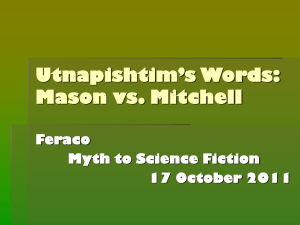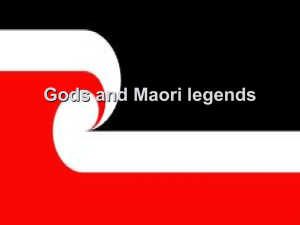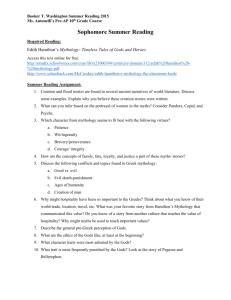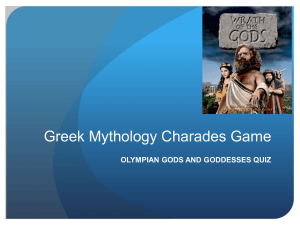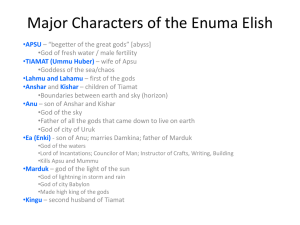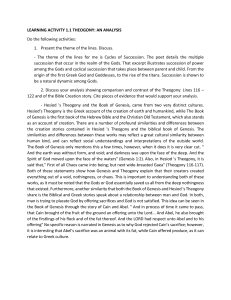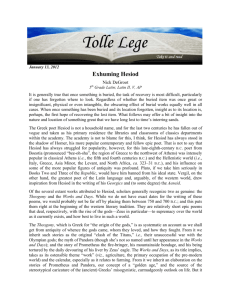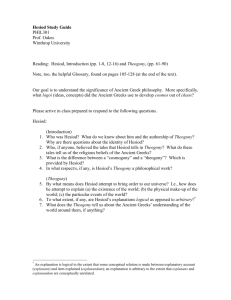Everything told in mythology is related to fertility and the renewal of
advertisement
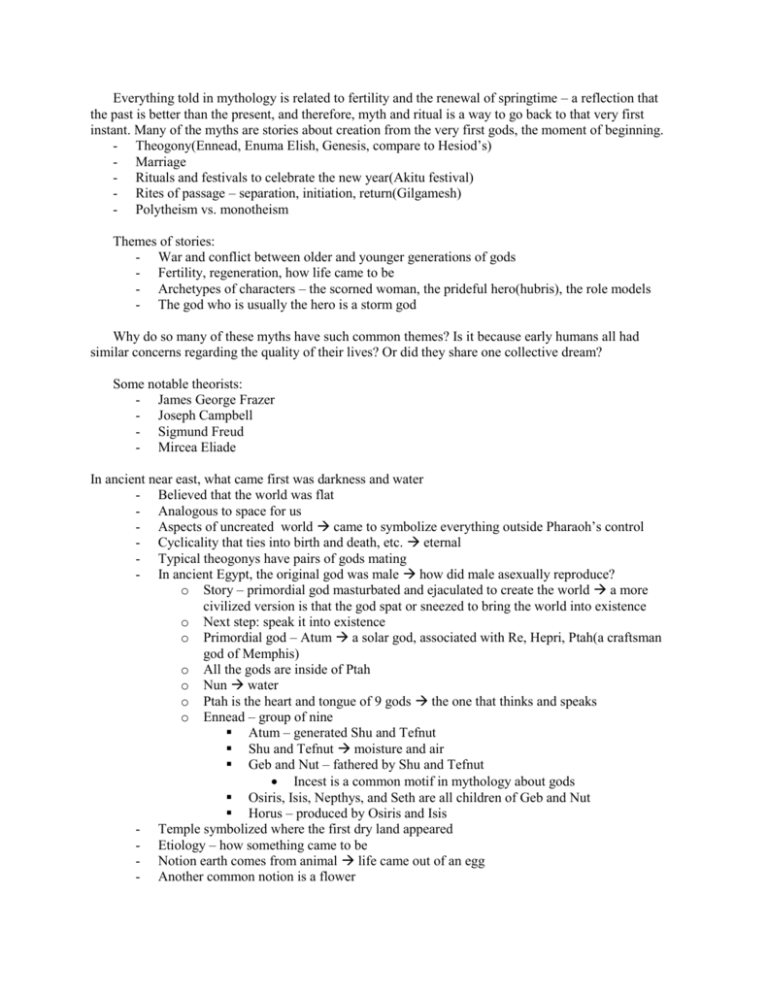
Everything told in mythology is related to fertility and the renewal of springtime – a reflection that the past is better than the present, and therefore, myth and ritual is a way to go back to that very first instant. Many of the myths are stories about creation from the very first gods, the moment of beginning. - Theogony(Ennead, Enuma Elish, Genesis, compare to Hesiod’s) - Marriage - Rituals and festivals to celebrate the new year(Akitu festival) - Rites of passage – separation, initiation, return(Gilgamesh) - Polytheism vs. monotheism Themes of stories: - War and conflict between older and younger generations of gods - Fertility, regeneration, how life came to be - Archetypes of characters – the scorned woman, the prideful hero(hubris), the role models - The god who is usually the hero is a storm god Why do so many of these myths have such common themes? Is it because early humans all had similar concerns regarding the quality of their lives? Or did they share one collective dream? Some notable theorists: - James George Frazer - Joseph Campbell - Sigmund Freud - Mircea Eliade In ancient near east, what came first was darkness and water - Believed that the world was flat - Analogous to space for us - Aspects of uncreated world came to symbolize everything outside Pharaoh’s control - Cyclicality that ties into birth and death, etc. eternal - Typical theogonys have pairs of gods mating - In ancient Egypt, the original god was male how did male asexually reproduce? o Story – primordial god masturbated and ejaculated to create the world a more civilized version is that the god spat or sneezed to bring the world into existence o Next step: speak it into existence o Primordial god – Atum a solar god, associated with Re, Hepri, Ptah(a craftsman god of Memphis) o All the gods are inside of Ptah o Nun water o Ptah is the heart and tongue of 9 gods the one that thinks and speaks o Ennead – group of nine Atum – generated Shu and Tefnut Shu and Tefnut moisture and air Geb and Nut – fathered by Shu and Tefnut Incest is a common motif in mythology about gods Osiris, Isis, Nepthys, and Seth are all children of Geb and Nut Horus – produced by Osiris and Isis - Temple symbolized where the first dry land appeared - Etiology – how something came to be - Notion earth comes from animal life came out of an egg - Another common notion is a flower - Natural generation and human generation as alternative models as to where all things came from Peoples of ancient Mesopotamia: - Sumerians - Akkadians - Assyrians - Babylonians(AKA Chaldeans) Gods that die and rise – symbolic of regeneration Epic of Gilgamesh – Gilgamesh tries to find immortality - But he finds that he cannot escape death, everyone is mortal - We relate to him because we all fear death, but he accepts the inevitable and instead of fighting, he begins building Genesis - Yahweh is often depicted as a storm god – he fought leviathan, a serpentine creature, much like Tiamat in the Enuma Elish - Yahweh also might have had a consort – Asherah - Was he a part of a pantheon, then rose to power – and did Akhenaten have influence on Moses, or did Moses influence Akhenaten? Hesiod’s Theogony – Philo of Byblos - Tells of the birth and creation of all the Greek gods in the pantheon - Story of Uranus, Cronus, and Zeus – all younger generations who wrested power from the older generation - Theogony written by Philo uses the names of the gods found in Ugaritic(Canaanite) myth – telling almost the exact same story as Hesiod tells - This shows how the stories and myths travel through the world – and the survival of the ancient near east in the world today

